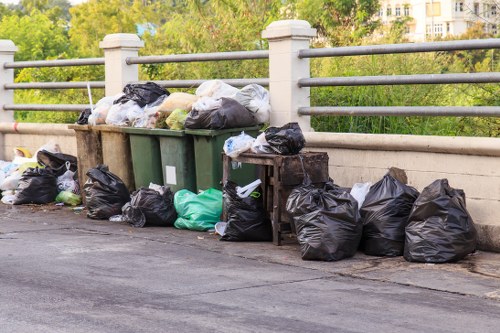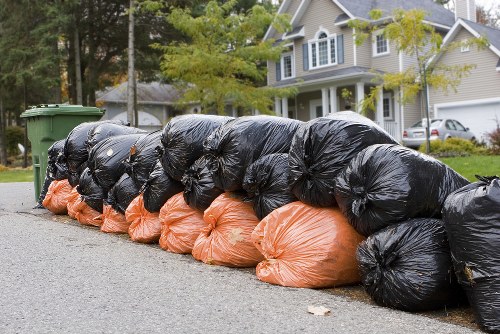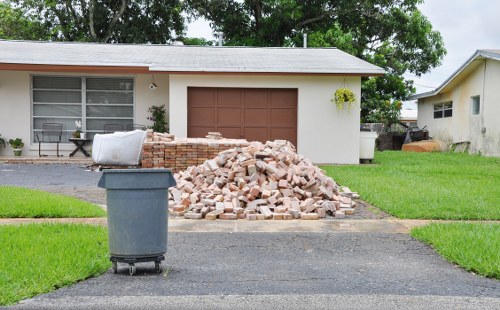Comprehensive Guide to Construction Waste Clearance in Havering
Understanding Construction Waste Clearance

Construction projects, whether large or small, inevitably generate a significant amount of waste. Effective construction waste clearance is essential to maintain a clean and safe worksite, comply with local regulations, and promote environmental sustainability. In Havering, this process is particularly crucial due to the area's rapid development and stringent waste management laws.
Proper waste clearance involves the removal, sorting, and disposal of materials such as concrete, wood, metals, and plastics. It not only helps in reducing the environmental footprint of construction activities but also ensures that reusable materials are recycled appropriately, minimizing landfill usage.
Failing to manage construction waste efficiently can lead to numerous issues, including increased costs, project delays, and potential legal repercussions. Therefore, understanding the nuances of construction waste clearance in Havering is vital for contractors, builders, and property developers operating in the region.
The Importance of Effective Waste Management

Effective waste management in construction is a cornerstone of sustainable building practices. In Havering, where environmental concerns are paramount, adhering to waste clearance protocols ensures that construction activities contribute positively to the community and the ecosystem.
One of the primary benefits of proper waste clearance is the reduction of environmental impact. By segregating and recycling materials, the construction industry can significantly lower its carbon footprint. Additionally, responsible waste management prevents the contamination of local waterways and soil, safeguarding public health and biodiversity.
Moreover, efficient waste clearance practices can lead to cost savings. Recycling materials or reusing them in other projects can reduce the need for new resources, thereby lowering project expenses. This financial advantage, combined with the environmental benefits, makes sustainable waste management an attractive proposition for businesses in Havering.
Regulations Governing Waste Clearance in Havering

Navigating the regulatory landscape is a critical aspect of waste clearance in Havering. The local authorities have established comprehensive guidelines to ensure that construction waste is managed responsibly.
These regulations mandate the segregation of waste at the source, the use of licensed disposal facilities, and the maintenance of detailed records of waste generation and disposal. Contractors must obtain the necessary permits and adhere to the stipulated procedures to avoid penalties and ensure compliance.
Understanding and complying with these regulations is not only a legal obligation but also a step towards sustainable construction practices. By staying informed about the latest waste management laws in Havering, businesses can streamline their operations and contribute to a greener future.
Best Practices for Construction Waste Clearance

Implementing best practices in construction waste clearance can vastly improve the efficiency and sustainability of construction projects in Havering.
1. Waste Segregation: Separating different types of waste at the source facilitates easier recycling and disposal. Categorize materials such as concrete, wood, metals, and plastics to streamline the clearance process.
2. Partnering with Licensed Waste Carriers: Collaborate with reputable waste clearance companies that are licensed and compliant with local regulations. This ensures that waste is handled and disposed of correctly.
Choosing the Right Waste Clearance Service

Selecting a reliable waste clearance service is pivotal for the success of any construction project in Havering. Here are some factors to consider:
- Experience: Opt for companies with a proven track record in construction waste clearance.
- Licensing and Compliance: Ensure that the service provider holds the necessary licenses and complies with local waste management laws.
- Recycling Capabilities: Choose services that prioritize recycling and sustainable disposal of materials.
- Timeliness: Efficient service providers can manage waste clearance without causing delays to your project timeline.
By carefully evaluating these aspects, you can partner with a waste clearance service that aligns with your project’s needs and sustainability goals.
Cost Factors in Waste Clearance
The cost of construction waste clearance in Havering can vary based on several factors. Understanding these can help in budgeting effectively.
- Volume of Waste: Larger projects generate more waste, leading to higher clearance costs.
- Type of Materials: Certain materials may require specialized disposal methods, affecting the overall cost.
- Frequency of Clearance: Regular waste clearance can prevent accumulation and manage costs efficiently.
- Location: Accessibility and distance from disposal facilities in Havering can influence pricing.
Engaging with multiple waste clearance providers for quotes and services can help in finding cost-effective solutions without compromising on quality.
Environmental Benefits of Proper Waste Clearance
Adhering to effective waste clearance practices offers numerous environmental advantages:
- Reduction in Landfill Use: Recycling and reusing materials minimize the reliance on landfills, preserving natural habitats.
- Energy Conservation: Recycling materials often consumes less energy compared to producing new materials from scratch.
- Emission Reduction: Proper waste management reduces greenhouse gas emissions associated with waste decomposition and transportation.
- Resource Preservation: Recycling conserves natural resources, ensuring their availability for future generations.
By prioritizing sustainable waste clearance, the construction industry in Havering can play a pivotal role in environmental conservation.
Innovative Technologies in Waste Management
The advancement of technology has revolutionized construction waste management in Havering. Innovative solutions are enhancing the efficiency and effectiveness of waste clearance processes.
- Automated Sorting Systems: These systems use sophisticated algorithms to segregate waste materials accurately, improving recycling rates.
- Waste Tracking Software: Digital tools help in monitoring waste generation and disposal, ensuring compliance with regulations.
- Green Building Technologies: Integrating waste management systems into building designs promotes sustainable construction practices.
Leveraging these technologies can streamline waste clearance operations, making them more sustainable and cost-effective.
Challenges in Construction Waste Clearance
Despite its importance, managing construction waste clearance in Havering presents several challenges:
- Varying Material Composition: The diverse nature of construction waste makes it difficult to categorize and recycle effectively.
- Logistical Issues: Transporting large volumes of waste requires efficient logistics to prevent project delays.
- Regulatory Compliance: Keeping up with evolving waste management laws can be demanding for construction companies.
- Cost Constraints: Balancing cost with effective waste management practices is often a significant hurdle.
Addressing these challenges requires strategic planning, investment in technology, and collaboration with experienced waste clearance services.
Future Trends in Waste Clearance
The future of construction waste clearance in Havering is poised for significant transformation, driven by sustainability and technological advancements.
- Circular Economy: Emphasizing the reuse and recycling of materials to create a closed-loop system.
- Advanced Recycling Techniques: Innovations in recycling processes will increase the efficiency and scope of waste material recovery.
- Smart Waste Management Systems: Integration of IoT and AI for real-time monitoring and management of waste clearance.
- Eco-friendly Disposal Methods: Development of new methods to minimize the environmental impact of waste disposal.
Staying abreast of these trends will enable construction businesses in Havering to adopt more sustainable and efficient waste management practices.
Conclusion
Construction waste clearance is a critical component of sustainable building practices in Havering. By understanding the regulations, implementing best practices, and leveraging innovative technologies, the construction industry can significantly reduce its environmental impact.
Effective waste management not only ensures compliance with local laws but also contributes to resource conservation and cost savings. As the industry continues to evolve, embracing sustainable waste clearance solutions will be paramount for long-term success.
Contact us today to learn more about our professional construction waste clearance services in Havering and take a step towards a greener future.